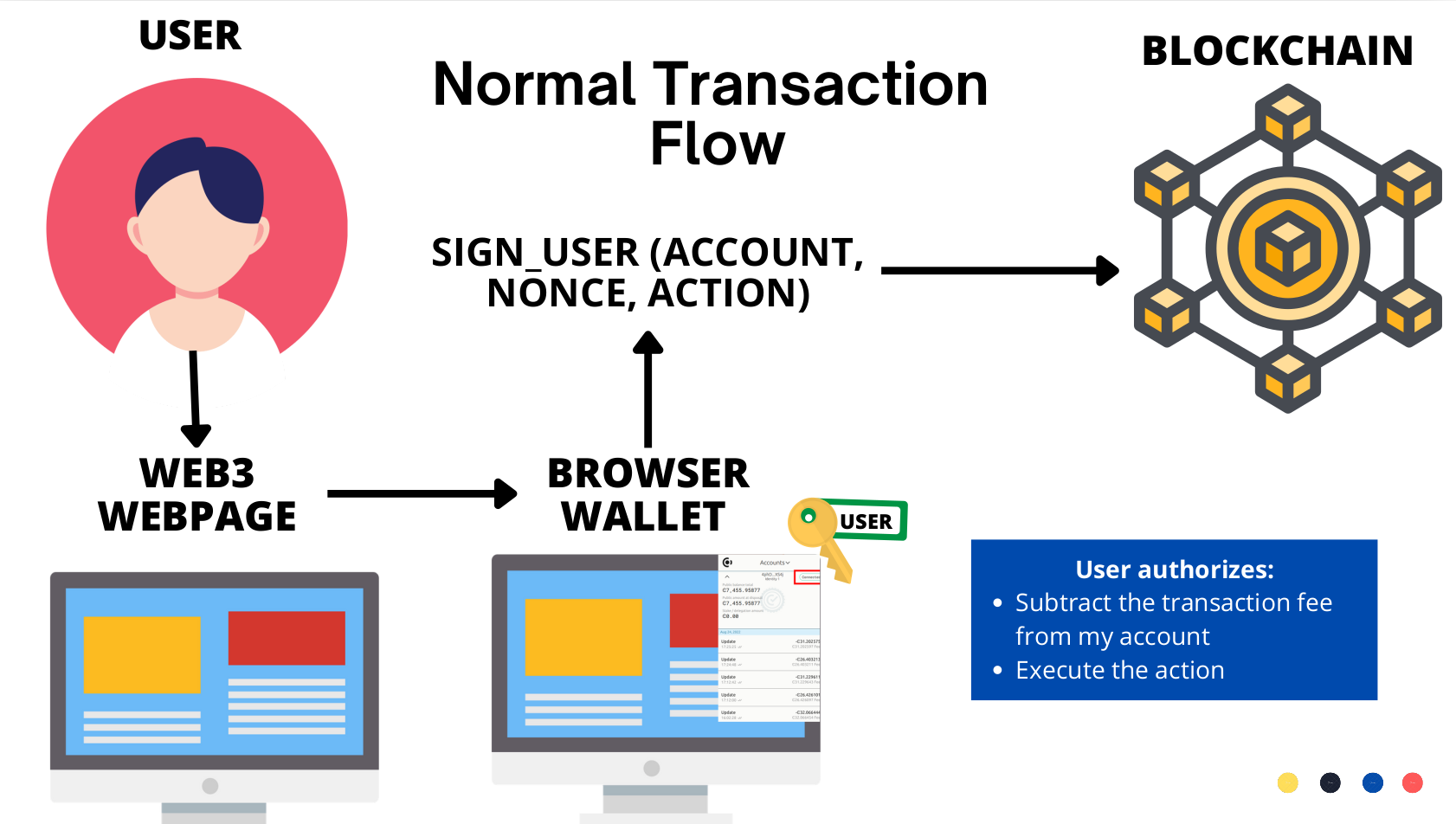
A Sponsored Transactions dApp#
In this tutorial, you are going to get familiar with how to implement a sponsored transaction mechanism in a smart contract, how to sign messages in a wallet and verify the signature in the smart contract and how to send a transaction from a backend server to the blockchain.
The dApp consists of three components that you will explore as part of this tutorial:
A smart contract that verifies signatures.
A frontend that requests the user (sponsoree) to sign messages.
A backend that has access to a wallet (sponsor) and sends transactions to the blockchain.
What are sponsored transactions?#
Sponsored transactions are a mechanism for a sponsor address (third-party) to submit a transaction to a smart contract on behalf of a sponsoree account (user/client). The user/client should sign its intended action in the Concordium Wallet for Web (or Concordium Wallet for Mobile that uses WalletConnect) to authorize the third-party to execute a specific action on its behalf. After the user/client signed its action, the signature is communicated to the third-party. The third-party account (invoker to the smart contract) pays for the transaction fees and submits the transaction on-chain. The signature is verified in the smart contract to ensure the action was authorized by the user/client.
What are the use cases of sponsored transactions?#
Sponsored transactions are a useful tool for third-party service providers to onboard conventional clients/users that don’t want to acquire crypto (such as CCD) from an exchange. The third-party can have a traditional fiat channel open (off-chain) with the conventional clients/users to charge for its service of offering to submit transactions on behalf of the user on-chain.The third-party service provider has its own wallet funded with some CCD at the backend to submit the user’s transaction on-chain. The third-party pays the transaction fee to execute the transaction on-chain.
What is the difference between a normal transaction vs. a sponsored transaction?#
A normal transaction sent to a smart contract is signed by the user’s wallet and authorizes the blockchain to subtract the transaction fee from the user’s wallet as well as to execute a specific action. For example, the action could be to transfer some tokens from the user’s address to another address.
The user creates a normal transaction by signing its account address, its nonce, and the action. The nonce increases sequentially every time the user sends a transaction to the blockchain to prevent replay attacks. The nonce is of type u64 (8 bytes) and by design >= 1.

A sponsored transaction decouples the transaction fee authorization (third-party wallet) from the action authorization (user’s wallet).
The user signs a message (in that case the prepend is account address and 8 zero bytes) to authorize the action. Hence, the 8 zero bytes ensure that the user does not accidentally sign a valid transaction. This means the red signature is not a transaction, while the black signature is a valid transaction in the image below. The user’s signature is sent to the backend server.
The third-party creates a valid transaction at the backend server, which is sent to the blockchain.

Note
The CIS-3 standard formally defines sponsored transactions.
